Yesterday morning I spent time focusing on photographing Great Blue Herons on the frozen marshes of Bear River Migratory Bird Refuge.
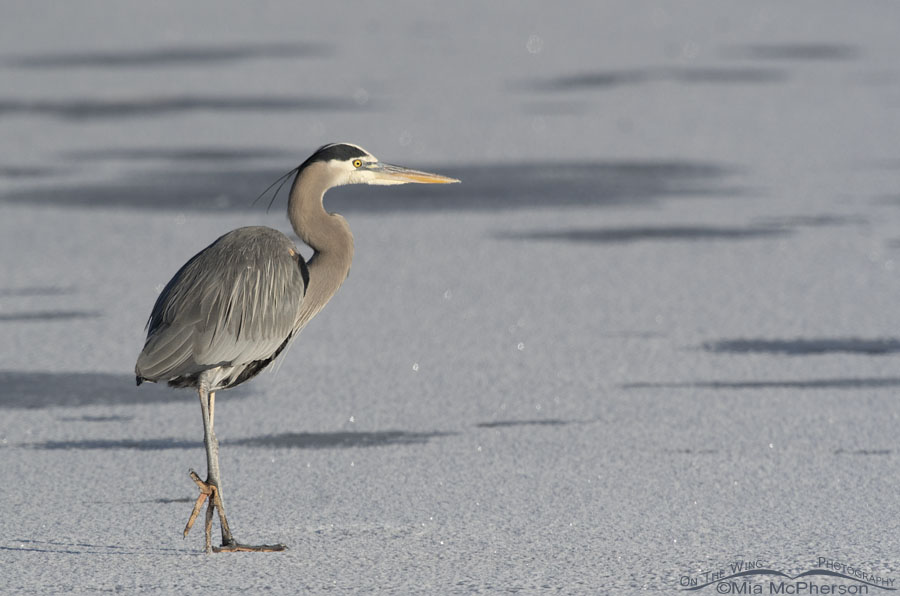 Great Blue Heron walking on frost-covered ice – Nikon D500, f7.1, 1/3200, ISO 500, Nikkor 500mm VR with 1.4x TC, natural light
Great Blue Heron walking on frost-covered ice – Nikon D500, f7.1, 1/3200, ISO 500, Nikkor 500mm VR with 1.4x TC, natural light
The Great Blue Herons seemed to be on the edges of the shelves of ice and water that has opened up because of the milder days we have had recently, they congregate there because they can capture fish in the open waters.
Some of our wading birds including our Great Blue Herons stay here for the winter despite the harsh conditions that we have in northern Utah during the coldest part of the year. When the water freezes completely over the herons start to hunt for small mammals instead of fish.
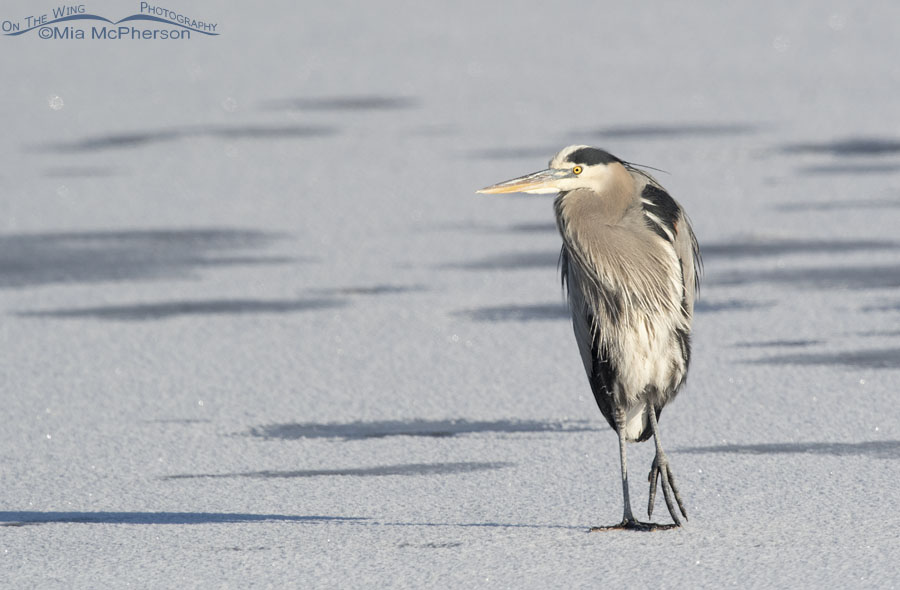 Great Blue Heron resting on ice in a cold January morning – Nikon D500, f7.1, 1/2500, ISO 500, +0.7 EV, Nikkor 500mm VR with 1.4x TC, natural light
Great Blue Heron resting on ice in a cold January morning – Nikon D500, f7.1, 1/2500, ISO 500, +0.7 EV, Nikkor 500mm VR with 1.4x TC, natural light
This Great Blue Heron seemed to be warming up in the sunlight. It may have fished for breakfast before I had it in my viewfinder or it may have been waiting until it warmed up before it started to hunt for prey.
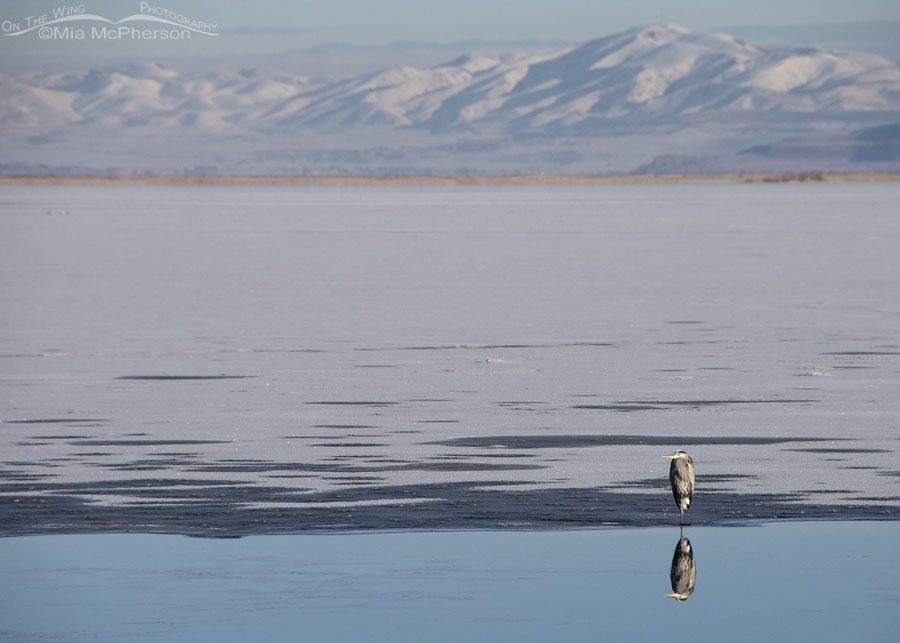 Great Blue Heron and the frozen marsh at Bear River MBR – Nikon D810, f8, 1/2500, ISO 400, Nikkor 18-200mm VR at 200mm, natural light
Great Blue Heron and the frozen marsh at Bear River MBR – Nikon D810, f8, 1/2500, ISO 400, Nikkor 18-200mm VR at 200mm, natural light
I decided yesterday morning that I also wanted to take photos of the Great Blue Herons that showed more of the frozen marsh, the wintry habitat and the mountains beyond the marshes so I pulled out my Nikon D810 that has a 18-200mm lens attached to it.
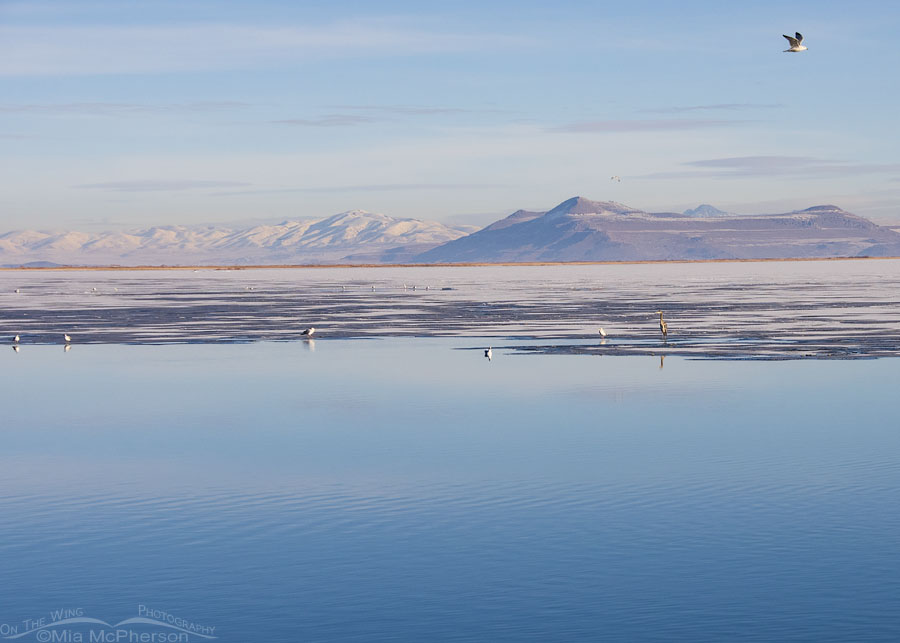 Immature Great Blue Heron and gulls on the frozen marsh of Bear River MBR – Nikon D810, f7.1, 1/2000, ISO 400, +0.7 EV, Nikkor 18-200mm VR at 60mm, natural light
Immature Great Blue Heron and gulls on the frozen marsh of Bear River MBR – Nikon D810, f7.1, 1/2000, ISO 400, +0.7 EV, Nikkor 18-200mm VR at 60mm, natural light
Photos like this one and the one above show much more information about the habitat and the harsh winter conditions than a photo taken with my long lens can. I think it is important at times to visually take a step back and show the habitat my birdy subjects are found in for the story about the images to be complete.
I saw a low of 20 degrees at the refuge yesterday morning but by the time I left the auto tour route the dark, dirt road had defrosted and was slick and muddy.
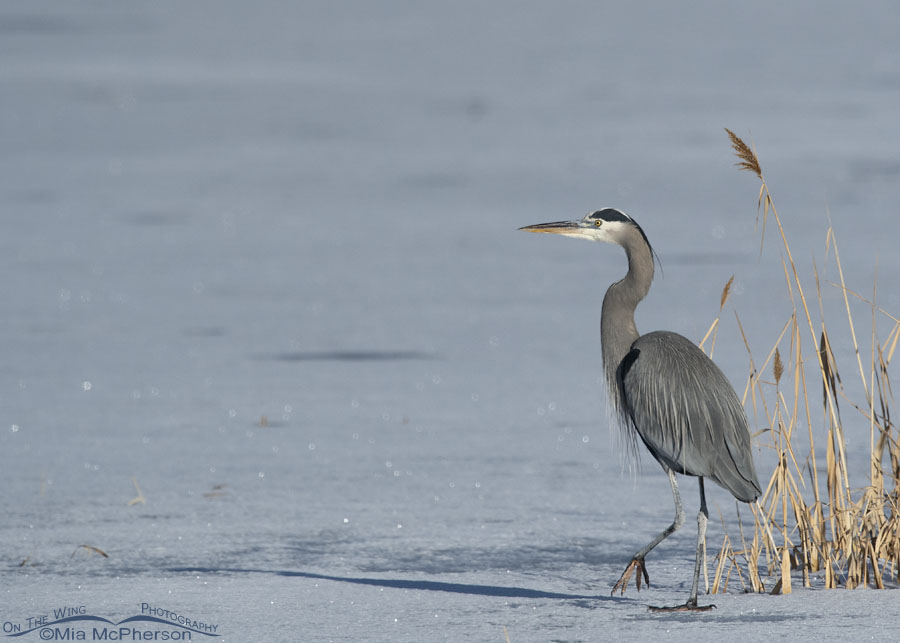 Winter Great Blue Heron on the frozen marsh – Nikon D500, f7.1, 1/5000, ISO 500, Nikkor 500mm VR with 1.4x TC, natural light
Winter Great Blue Heron on the frozen marsh – Nikon D500, f7.1, 1/5000, ISO 500, Nikkor 500mm VR with 1.4x TC, natural light
I know that I have written before that our Great Blue Herons have to be tough to get through our hard winters here in northern Utah and I believe these photos that were taken yesterday morning show just how strong they have to be to survive the harsh winter conditions.
Life is good.
Mia
Click here to see more of my Great Blue Heron photos plus facts and information about this species.


Lovely overall shots, Mia ! Beautiful scenery with the Heron as the cherry on the cake ! Cheers, Hans
Beautiful blues in the water and sky, quaint first pose, and hairy (Um, feathery) neck.
Thank you for including the shots of the environment and well as this stately beauty.
And yes, birds (the world over) do indeed need to be tough.
Miya I really enjoyed the Blue Herons. I particularly liked the one lonely Chap standing on one leg with the whole frozen world behind him.
Some days I feel just like that though right now I am living in Down Town Vancouver amongst a great crush of lovely Young
Young people of all races with their trendy clothes Smart Phones and
Foreign Languages. I think that Heron and I would get along Just Great!!!
May God Bless you and give you peace and warmth as you give so much to us —- Oh and a Great Birdy New Year
Michael Pope